Explore the Best AI Image Gallery
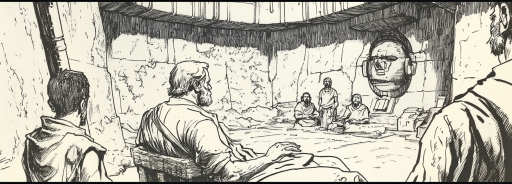
The Future of Product Photography: AI Innovations Redefining the Landscape
In the ever-evolving world of e-commerce and digital marketing, product photography has always played a pivotal role. It shapes consumer perception and influences purchasing decisions. However, with the surge of artificial intelligence (AI) technologies, the landscape of product photography is undergoing a dramatic transformation. From streamlining workflows to enhancing creativity, AI tools are redefining the way product images are created, managed, and utilized.
The Impact of AI on Product Photography
One of the most significant changes brought about by AI in product photography is the automation of the image creation process. Traditional photography can be time-consuming, requiring significant resources, including equipment, skill, and time. AI-driven tools enable brands to produce high-quality images rapidly without compromising on aesthetics. For instance, platforms like Remove.bg use AI to automatically remove backgrounds from images, allowing for clean product shots that enhance visual appeal.
AI is also optimizing the editing process. Software like Adobe Sensei leverages machine learning to analyze images and suggest enhancements such as color correction and composition adjustments. This not only enhances the final image quality but also empowers even novice photographers to create market-ready visuals with ease.
Creative Potential and New Use Cases
The creative potentials of integrating AI into product photography are vast. AI can analyze consumer preferences, trending aesthetics, and even competitor strategies to generate images tailored for specific target audiences. Tools like Shutterstock are incorporating AI to deliver personalized image recommendations, helping brands connect with consumers through visual storytelling.
Moreover, AI can assist in creating 3D renderings of products, which is particularly valuable in industries like automotive and fashion. Using models like NVIDIA's GANs (Generative Adversarial Networks), brands can create hyper-realistic images of their products without the need for extensive photoshoots. This not only saves time and resources but also allows for more innovative presentations of products, such as virtual try-ons and immersive augmented reality experiences.
Ethical Considerations
As with any technological advancement, the rise of AI in product photography also raises ethical considerations. The authenticity of images is a significant concern; with AI's ability to enhance or alter photographs, consumers may find it challenging to discern between reality and digitized manipulation. Brands must maintain transparency about the use of AI in their visual content to preserve consumer trust.
Furthermore, there is a growing discussion around copyright and ownership of AI-generated images. If an image is created entirely by an AI algorithm, the question arises: who owns the copyright? These debates are crucial as they can shape the legal landscape surrounding the use of AI in creative fields.
Future Trends in AI-Driven Product Photography
The future of product photography is undoubtedly intertwined with the evolution of AI technologies. Here are some trends to watch out for:
- Hyper-Personalization: As AI continues to evolve, brands will leverage data analytics to create highly personalized product images that resonate with individual customers, enhancing conversion rates.
- Advanced Augmented Reality: Brands will increasingly adopt AR tools for virtual try-ons and interactive product displays, allowing consumers to visualize products in their real-world environments.
- Sustainability Efforts: AI can contribute significantly to sustainability initiatives in product photography by reducing the need for physical resources, lowering carbon footprints, and optimizing supply chains.
- AI-Driven Market Analysis: AI's ability to analyze consumer behavior and preferences will enable businesses to make data-driven decisions regarding their product imagery strategies.
- Collaboration Between Humans and AI: Lastly, while AI will automate many tasks, the human touch will remain essential in creative photography. The collaboration between human creativity and AI efficiency will create a new paradigm of artistic expression.
Conclusion
AI is undoubtedly reshaping the landscape of product photography. As technology advances, brands must adapt their strategies to embrace these innovations while considering the ethical implications. By doing so, they can leverage the power of AI not only to enhance their product imagery but also to create deeper connections with consumers. As we look ahead, the synergy of AI and human creativity holds endless possibilities for the future of product photography.




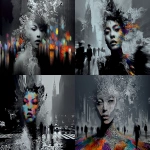








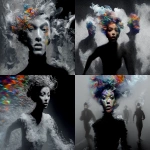


](https://images.ai-img.art/thumbnails/150/847809c77ca9a73b68bc190e6efb06fec87157685a243730d5a66a403b0e6e10.webp)





](https://images.ai-img.art/thumbnails/150/685ae68cfab93a7e59a71206867b060c45bd6fd3cd561c4fe60fca514b09c5f8.webp)

](https://images.ai-img.art/thumbnails/150/7cf5a08238f29c821f52bb4f63db48af0b7f633ff3b9f7253074d78ced9ff6f6.webp)


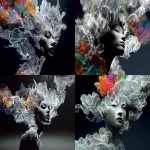








](https://images.ai-img.art/thumbnails/150/bd056a4718c27444e064198762f8dc8ffa1f74f1afd7dcda8d5cb8b142797d6e.webp)

](https://images.ai-img.art/thumbnails/150/a3ed6513a6661aa3ee46e0c2924d1e8888854e91d8908de39db5590dc41f8d8f.webp)

](https://images.ai-img.art/thumbnails/150/2ebdeb4f7db35100e5be5de9bc3e533a40d14e5feedefd7ffc586524a0f3ba8c.webp)
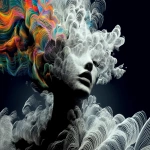
](https://images.ai-img.art/thumbnails/150/0ba0be922ab76af53f75ab90126ae2b18a600ee3b96941e8ab897a9f10594e5a.webp)
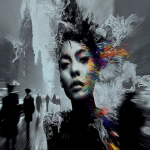





](https://images.ai-img.art/thumbnails/150/ff09e32d2be011c0dd785984c5c1e47839ce551a31da1bde242860b30df2aa30.webp)